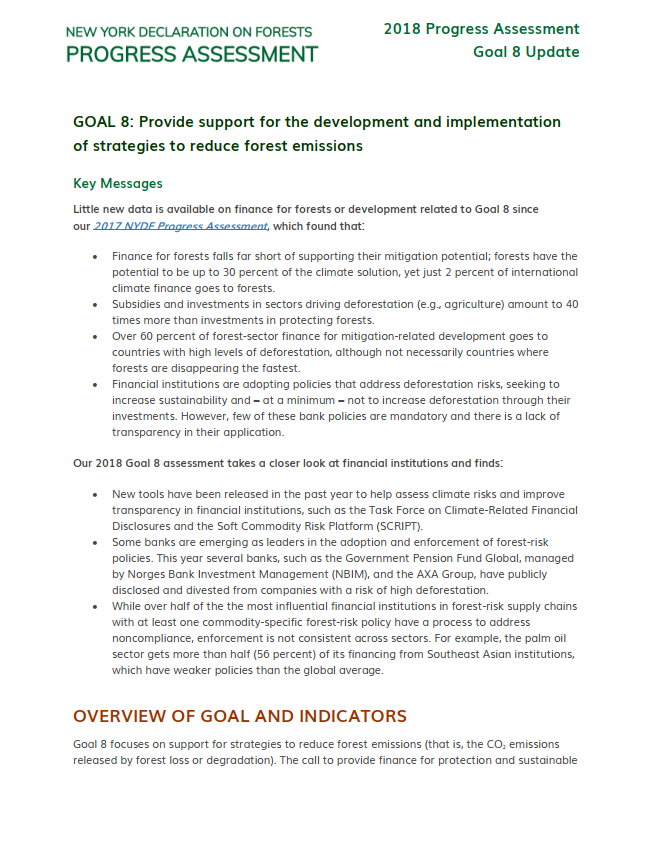Little new data is available on finance for forests or development related to Goal 8 since our 2017 NYDF Progress Assessment, which found that:
• Finance for forests falls far short of supporting their mitigation potential; forests have the potential to be up to 30 percent of the climate solution, yet just 2 percent of international climate finance goes to forests.
• Subsidies and investments in sectors driving deforestation (e.g., agriculture) amount to 40 times more than investments in protecting forests.
• Over 60 percent of forest-sector finance for mitigation-related development goes to countries with high levels of deforestation, although not necessarily countries where forests are disappearing the fastest.
• Financial institutions are adopting policies that address deforestation risks, seeking to increase sustainability and – at a minimum – not to increase deforestation through their investments. However, few of these bank policies are mandatory and there is a lack of transparency in their application.
Our 2018 Goal 8 assessment takes a closer look at financial institutions and finds:
• New tools have been released in the past year to help assess climate risks and improve transparency in financial institutions, such as the Task Force on Climate-Related Financial Disclosures and the Soft Commodity Risk Platform (SCRIPT).
• Some banks are emerging as leaders in the adoption and enforcement of forest-risk policies. This year several banks, such as the Government Pension Fund Global, managed by Norges Bank Investment Management (NBIM), and the AXA Group, have publicly disclosed and divested from companies with a risk of high deforestation.
• While over half of the the most influential financial institutions in forest-risk supply chains with at least one commodity-specific forest-risk policy have a process to address noncompliance, enforcement is not consistent across sectors. For example, the palm oil sector gets more than half (56 percent) of its financing from Southeast Asian institutions, which have weaker policies than the global average.


